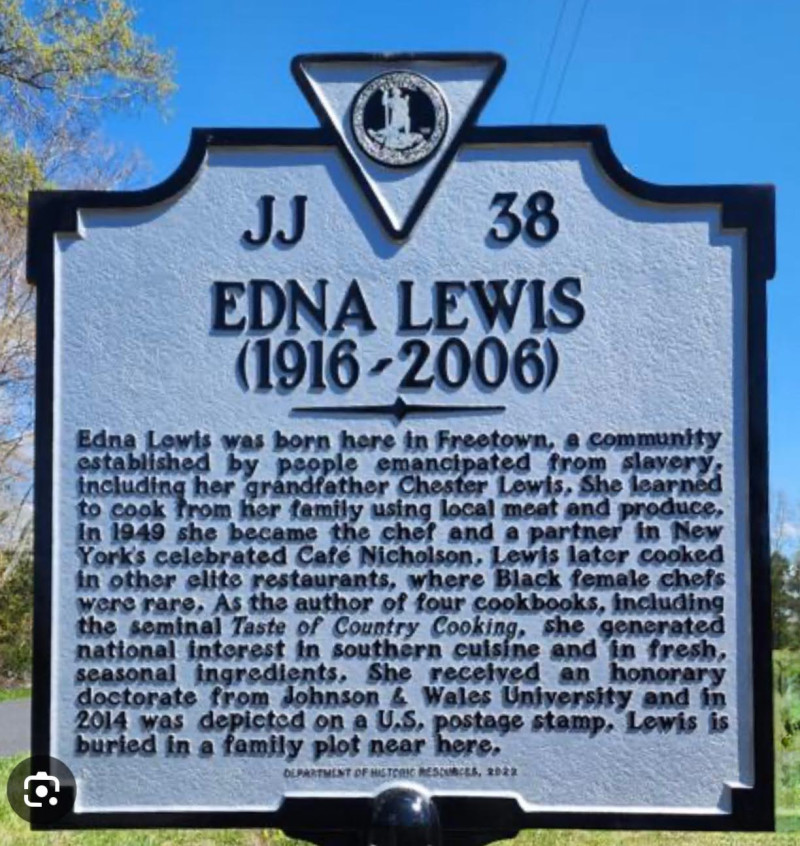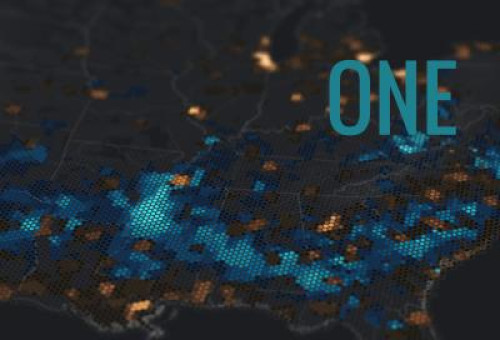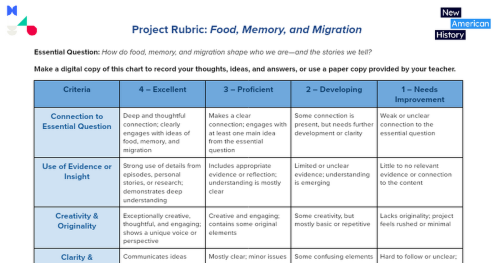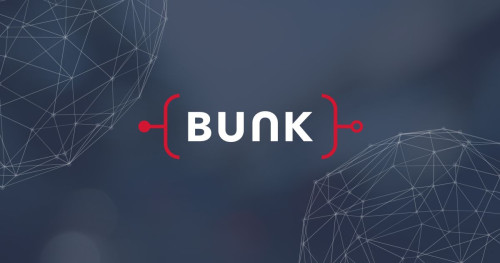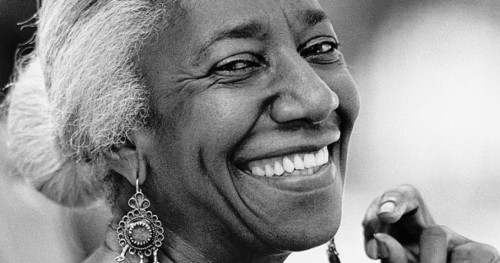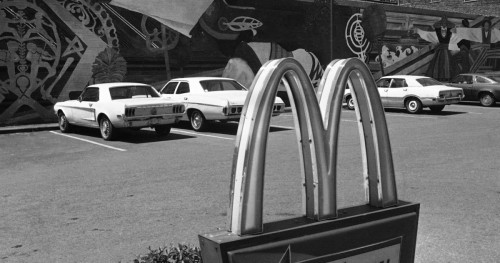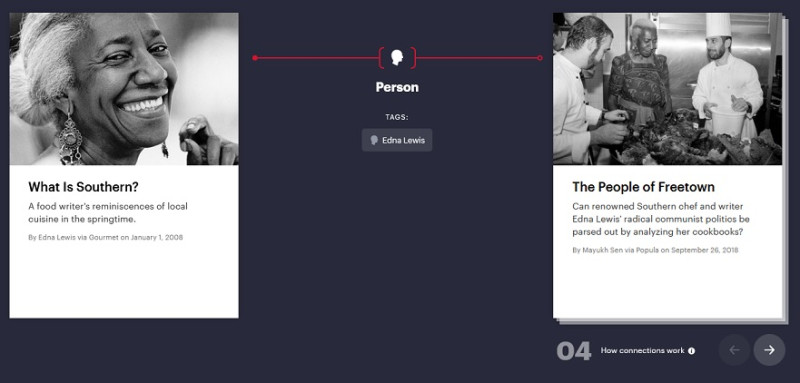This work by New American History is licensed under a Attribution-NonCommercial-ShareAlike 4.0 (CC BY-NC-SA 4.0) International License. Permissions beyond the scope of this license may be available at newamericanhistory.org.
All History is Local: Finding Edna Lewis
View Student Version
Standards
C3 Framework:D1.1.6-8. Explain how a question represents key ideas in the field.D1.3.6-8. Explain points of agreement experts have about interpretations and applications of disciplinary concepts and ideas associated with a supporting question.D1.5.6-8. Determine the kinds of sources that will be helpful in answering compelling and supporting questions, taking into consideration multiple points of views represented in the sources.D2.His.1.6-8. Analyze connections among events and developments in broader historical contexts.D2.His.2.6-8. Classify series of historical events and developments as examples of change and/or continuity.D2.Geo.4.6-8. Explain how cultural patterns and economic decisions influence environments and the daily lives of people in both nearby and distant places.D2.Geo.6.6-8. Explain how the physical and human characteristics of places and regions are connected to human identities and cultures.D2.Eco.1.6-8. Explain how economic decisions affect the well-being of individuals, businesses, and society.D2.Eco.6.6-8. Explain how changes in supply and demand cause changes in prices and quantities of goods and services, labor, credit, and foreign currencies.D1.1.9-12. Explain how a question reflects an enduring issue in the field.D1.3.9-12. Explain points of agreement and disagreement experts have about interpretations and applications of disciplinary concepts and ideas associated with a supporting question.D1.5.9-12. Determine the kinds of sources that will be helpful in answering compelling and supporting questions, taking into consideration multiple points of view represented in the sources, the types of sources available, and the potential uses of the sources.D2.His.1.9-12. Evaluate how historical events and developments were shaped by unique circumstances of time and place as well as broader historical contexts.D2.His.2.9-12. Analyze change and continuity in historical eras.D2.Geo.4.9-12. Analyze relationships and interactions within and between human and physical systems to explain reciprocal influences that occur among them.D2.Geo.6.9-12. Evaluate the impact of human settlement activities on the environmental and cultural characteristics of specific places and regions.D2.Eco.1.9-12. Analyze how incentives influence choices that may result in policies with a range of costs and benefits for different groups.D2.Eco.6.9-12. Generate possible explanations for a government role in markets when market inefficiencies exist.
National Council for Social Studies:Themes: 1. Culture & 4. People, Places & Environments
National Geography Standards: Geography Standard 1: How to use maps and other geographic representations, geospatial technologies, and spatial thinking to understand and communicate information.Geography Standard 6: How culture and experience influence people’s perceptions of places and regions.
EAD FrameworkPrimary Theme: We The PeopleKEY CONCEPTS
Cultivate understanding of personal values, principles, commitments, and community responsibilitiesAnalyze the impact of enslavement, Indigenous removal, immigration, and other hard histories on definitions of and pathways to citizenshipExplore the causes and consequences of different groups’ marginalization from participation in the polityEvaluate the extent to which marginalized groups have won incorporation into “the people” and advanced the shared values and principles of the U.S.
HSGQ3.3C How has the definition of who is an American changed over time?HSGQ3.3D What is my story of the meaning of “American”—whether I am a citizen or a resident?HSGQ3.3G How have the many dimensions of diversity pertained to the challenges and opportunities involved in forging one people out of many? CSGQ3.3K How do historical and political meanings of “the people” compare with and relate to each other? Which “peoples” am I a member of?
Teacher Tip: Think about what students should be able to KNOW, UNDERSTAND, and DO at the conclusion of this learning experience. A brief exit pass or other formative assessment may be used to assess student understandings. Setting specific learning targets for the appropriate grade level and content area will increase student success.
Suggested Grade Levels: middle school (6-8), high school (9-12)
Suggested Timeframe: Two 45-minute periods
Suggested Materials: Internet access via laptop, tablet or mobile device
Key Vocabulary
Audio Story – a narrative told primarily through sound, using elements like dialogue, sound effects, and music to create an immersive experience for the listener.
Community kitchen – a shared space where people come together to cook, eat, and learn about food, often with the goal of building community and addressing food insecurity
Compote – a dessert consisting of pieces of fruit cooked in a syrup.
Cuisine – a style of cooking characterized by specific ingredients, techniques, and dishes, often associated with a particular culture or region.
Curated – carefully selected and thoughtfully organized or presented. It implies a process of choosing and arranging items, content, or experiences to achieve a specific effect or convey a particular theme.
Diaspora – a population that is scattered across various regions, separate from their geographic place of origin, while maintaining a connection to that homeland.
Docuseries – a television or streaming series that presents factual information in a documentary format, typically over multiple episodes.
Elegant – something that is graceful, stylish, and refined, often with a sense of sophistication and beauty.
Elemental – something fundamental, basic, or essential, often relating to nature's forces or the basic building blocks of something.
Emancipation – the act of being freed from legal, social, or parental control. It can refer to the freeing of an enslaved person from bondage, the release of a minor from parental authority, or the granting of equal rights to a group or individual.
Emancipation Day – a holiday commemorating the end of slavery.
Farm-to-table – a movement where restaurants and consumers source food directly from local farms.
Foodways - the cultural, social, and economic practices surrounding the production, preparation, consumption, and significance of food within a community. They encompass everything from the gathering and hunting of ingredients to specific recipes, culinary traditions, eating habits, and the folklore and rituals associated with food.
Forage/Foraging – the edible parts of plants, other than separated grain, that can be used as food for animals or harvested for later feeding.
Grande Dame – an older woman who is highly respected and admired within a specific field or generally for her dignified or aristocratic bearing.
Great Migration – the mass movement of African Americans from the rural South to the urban North, Midwest, and West in the United States, primarily between 1910 and 1970.
Haute cuisine – a style of cooking characterized by elaborate, refined techniques, high-quality ingredients, and artistic presentation, often associated with fine dining and upscale restaurants.
Pan-broiled – a dry-heat cooking method that involves cooking food in a hot, dry skillet without the addition of fat or with only a minimal amount of fat brushed onto the food.
Pan-fried – a cooking method where food is cooked in a pan with a small amount of oil or fat, typically enough to lightly coat the bottom of the pan.
Preserves – jars of jam or fruit preserved with sugar.
Power of Place – in geography, "power of place" refers to the concept that places have meaning and influence individuals and societies. The power of place in geography emphasizes that locations are not just coordinates on a map but are dynamic spaces that actively shape human experience, culture, and society.
Ragout – a highly seasoned dish of meat cut into small pieces and stewed with vegetables.
Reconstruction - the period after the Civil War, from about 1863-1877, when the federal government passed civil rights legislation and attempted to transform the Southern states as they returned to the Union.
Rubric - in education a rubric is a guide for scoring used to evaluate the quality of students' responses. It often serves as a set of criteria for grading assignments.
Seasonal eating – the practice of consuming foods when they are naturally in season, meaning they are at their peak of ripeness and flavor, typically in their local growing region.
Segregation - segregation is the separation of people into racial or other ethnic groups in daily life. Segregation can involve the spatial separation of the races, and mandatory use of different institutions, such as schools and hospitals by people of different races.
Sharecropping - an agricultural system where farmers, typically lacking their own land, work a plot for a landowner in exchange for a share of the harvested crops. This system emerged in the post-Civil War American South as a way for landowners to maintain a labor force without paying cash wages and for formerly enslaved people to find work. However, sharecropping contracts often favored landowners, leading to perpetual debt and poverty for sharecroppers, particularly Black Americans, and hindering their economic mobility
Southern Foodways - encompasses the diverse culinary practices and traditions of the Southern United States, reflecting a rich history shaped by indigenous cultures, European influences, and the legacy of African slavery.
Storyboard – a visual representation of a story, often used in film-making, animation, and advertising, that outlines the sequence of shots or scenes.
StoryMap - a web-based map integrating text, images, and multimedia elements to help users explore content and visualize data
Trailblazer – a person who is the first to do something, especially in a new field, effectively creating a path for others to follow.
‘Zine – a small, self-published booklet or magazine, often created for personal expression or to share niche interests.
Read for Understanding
Teacher Tips
New American History Learning Resources may be adapted to a variety of educational settings, including remote learning environments, face-to-face instruction, and blended learning.
This learning resource was created in collaboration with Field Studio and VPM around the web series and Emmy Award-winning documentary film, Finding Edna Lewis. For more examples of our collaborations with Field Studio and VPM, check out the Video tab on our homepage and visit The Future of America's Past, or view the award-winning documentary, How the Monuments Came Down. Look for all of our related learning resources for the series and film in our learning resources library.
If you are teaching remotely, consider using videoconferencing to provide opportunities for students to work in partners or small groups. Digital tools such as Google Docs or Google Slides may also be used for collaboration. Rewordify helps make a complex text more accessible for those reading at a lower Lexile level while still providing a greater depth of knowledge.
Teachers of Multilingual Learners may find that using sentence frames can help ELLs by providing a structured framework that can support them when expressing their ideas in complete sentences, whether they are speaking or writing. It serves as a scaffold for ELLs who struggle with grammar and/or vocabulary while promoting the use of academic language.
The S-I-T: Surprising, Interesting, Troubling protocol allows students to make their thinking visible using a structured table that can help them categorize their thoughts in a clear and precise manner. It also allows students to demonstrate their engagement with the text, as they note their reactions to various parts of the comic. A template is provided for you to modify as needed, for students to make a digital copy, or to print paper copies for your students as needed.
Exit tickets allow students to reflect on their learning and enhance their communication skills. Exit tickets and graphic organizers allow students to reflect on their learning and enhance their communication skills. The Engage, Explore, and Explain sections of this learning resource include graphic organizers/exit tickets that use Give One/Get One, Sketchnotes, S-I-T Strategy, and Reciprocal Teaching Discussion Protocol for further engagement. Templates are linked within the lesson for you to modify, for students to copy, or to print paper copies for your students as needed.
The Elaborate section offers students choice-based creative extensions to synthesize their learning from Finding Edna Lewis Episodes 2 & 3. Each option invites students to reflect on themes of food, identity, migration, and legacy while connecting personally to Edna Lewis’s story. These projects encourage multimodal expression—visual, written, audio—and can be adapted for individual or group work. Students choose one of five options: 1) Share a personal food story through audio, 2) Trace migration journeys visually, 3) Celebrate food legacies through ‘Zines, 4) Curate an exhibit exploring food and identity, and 5) Write a reflective letter to Edna Lewis. These tasks support differentiated learning and deepen students’ understanding of how culture, community, and food shape personal and collective histories. The section also includes a rubric to assess the students’ projects.
These Learning Resources follow a variation of the 5Es instructional model, and each section may be taught as a separate learning experience or as part of a sequence of learning experiences. We provide each of our Learning Resources in multiple formats, including web-based and as an editable Google Doc for educators to teach and adapt selected learning experiences as they best suit the needs of your students and local curriculum. You may also wish to embed or remix them into a playlist for students working remotely or independently.
It would be beneficial to have students, staff, and families host an evening of food, culture, and storytelling to celebrate cultural traditions and the legacy of pioneering chef Edna Lewis. Families are invited to bring a cultural or family dish to share, enjoy a community meal, and watch the full hour documentary version of Finding Edna Lewis. Together, the entire school community can explore how food connects us to history, heritage, and each other. Should you choose to do this, be sure to follow any school or district guidelines for serving food, and consult the school nurse for protocols on food allergies, etc.. The full documentary is available with PBS Passport.
For Students
In this powerful new docuseries from VPM, you'll explore the life and legacy of Edna Lewis, a trailblazing Virginia-born chef who changed the way America thinks about Southern food. More than just a cookbook author, Edna Lewis used recipes to tell stories—about family, freedom, and the deep roots of African American culture in the South. Through interviews, historical footage, and mouth-watering visuals, this series shows how one woman’s love for farm-to-table cooking became a movement that still inspires chefs and communities today.
As you watch, you'll not only learn about Lewis’s influence on American cuisine but also gain a deeper understanding of African American history, cultural traditions, and the power of food as a form of storytelling
Engage:
How can food be used as a lens to understand history, culture, and social change?
Edna Lewis was a groundbreaking chef, author, and activist from Virginia who changed the way people thought about Southern food. She grew up in Freetown, a community founded by formerly enslaved people, where food was more than a meal—it was a way to remember, resist, and reconnect.
Through her cooking, Edna told powerful stories about history, culture, and identity. This docuseries explores her life, her love of fresh, seasonal ingredients, and how she used food to celebrate African American traditions that had often been overlooked or forgotten.
First, view this introduction to the Emmy Award-winning documentary, Finding Edna Lewis, to learn who Edna Lewis was and why she was such a trailblazer!
Finding Edna Lewis: Episode 1 -The Journey Starts Here
As you view the Introduction, think about this question: What Do We Know About Food, Culture, and Edna Lewis?
View Finding Edna Lewis: Episode 2 - Happy Birthday, Edna!
As you watch episode 2, make some observations about what you see and hear:
- What do you see the people doing?
- What observations can you make about their gathering?
- What information does this episode provide about Edna Lewis?
- What information can you gather about Edna’s cooking and its importance?
- Why do you think people still remember Edna’s cooking and her cookbooks?
Sentence Frames:
- I see people _____________.
- I can observe that they are gathered because ___________.
- This episode tells me that Edna ___________.
- Edna’s cooking is important because ______________.
- I think people still remember her cooking and cookbooks because ____________.
Once you have finished jotting your observations, use the Give One/Get One Protocol to exchange ideas with a classmate (or two) and record their answer below using the graphic organizer provided.
Your teacher may ask you to record your answers on an exit ticket.
Explore:
How was the American South shaped by race, land, and labor— and how did Edna Lewis use food and memory to tell a fuller story of that history?
You will use a digital StoryMap to investigate place-based history. Take some time to explore “Creating the American South: 1790 - 1860”.
As you explore the StoryMap, focus on these major themes for notes and discussion:
1. Land & Labor: Who worked the land? Who owned it?
Examine sections about slavery, Reconstruction, and sharecropping.
Identify how land ownership and labor shaped class and race hierarchies.
Discussion Questions:
How did access to land define freedom and opportunity after slavery?
How might Edna Lewis’s roots in Freetown, a town founded by formerly enslaved people, reflect this history?
In what ways do her stories about farming and food challenge stereotypes about the South?
2. Memory & Myth: Who gets to tell the story of the South?
Explore how Confederate monuments and Southern myths shaped historical memory.
Reflect on the role of storytelling, both oral and written, in shaping identity.
Discussion Questions:
What myths about the South does this StoryMap challenge?
How did Edna Lewis offer a different vision of Southern identity?
Why is food a powerful tool for preserving personal and collective memory?
3. Culture & Resistance: How did Black Southerners shape the region’s culture?
Look for examples in the StoryMap where Black creativity, music, foodways, and community traditions shaped Southern culture despite racism and segregation.
Discussion Questions:
How did Black Southerners resist cultural erasure and preserve their traditions?
How is Edna Lewis’s cooking a form of cultural preservation and resistance?
What makes her voice important in the broader story of the South?
Take notes using the S-I-T Strategy on the information you are most interested in exploring. Your teacher may provide a paper copy of the graphic organizer or allow you to make a digital copy.
Your teacher may ask you to record your answers on an exit ticket.
Explain:
How did Edna Lewis’s journey during the Great Migration shape her identity and influence the evolution of Southern food?
You will use the Reciprocal Teaching Protocol in small groups to view and discuss Episode 3 - Edna In the Great Migration.
Reciprocal Teaching is a group reading strategy where everyone takes on a role to help the group better understand a text/video. Each person within the group has a role:
- Questioner – Asks big or tricky questions about the text to spark discussion.
- Summarizer – Gives a quick recap of the most important ideas.
- Clarifier – Clears up confusing words, phrases, or sections.
- Connector – Makes connections between the text and real life, other readings, or personal experiences.
By working together and rotating roles, everyone builds deeper understanding—and helps teach each other!
Choose Roles in Small Groups: Each of you will choose one of the following roles:
- Questioner – Asks thoughtful questions about how the episode uses maps or narratives (For example,” How does the narrator guide us through Edna’s journey? Whose voice is telling this part of the story?” or “How does the visual storytelling help you understand why the Great Migration mattered to Edna?”)
- Summarizer – Briefly explains the main points of a segment (e.g., “What is the main point of the segment where Edna moves to New York?” or ”What are the most important takeaways from this part of her journey?” )
- Clarifier – Helps explain terms, context, or visual elements (e.g., “What does the term ‘Great Migration’ mean, and why is it important here?” or “Can someone explain what ‘Southern foodways’ means in this context?”)
- Connector – Makes connections to other parts of the episode, other topics they’ve learned, or current events (e.g., “Can we compare her journey to other stories of migration or change?” or “What current conversations about food, culture, or identity remind you of this episode?”)
Rotate roles in later rounds so that you may each have the opportunity to try each one.
Whole-Class Reflection: After small-group discussions, come together to reflect:
- How did Edna Lewis’s journey during the Great Migration change her relationship to food and identity?
- What does this episode teach us about the power of place, both where we come from and where we go?
- How do maps, visuals, and personal stories work together to tell Edna’s story?
- Why do stories like Edna’s matter today—especially when we talk about culture, history, and food?
Sentence Frames:
- Edna Lewis’s journey during the Great Migration changed her relationship to food and identity by ________________.
- This episode teaches that the power of place can ________________.
- The maps, visuals, and personal stories work together to tell Edna’s story because they show _______________.
- Stories like Edna’s matter today, especially when we talk about culture, history, and food, because _______________ and _______________.
Consider this question as a final reflection:
“How did Edna’s migration shape who she became and what she cooked?”
Your teacher may ask you to record your answers on an exit ticket.
Elaborate:
How do food, memory, and migration shape who we are and the stories we tell?
You may choose ONE of these extensions to apply your learning about Episodes 2 & 3 from “Finding Edna Lewis.”
1. Audio Story: “A Taste of Home”
Task: Create a short audio story (2–4 mins) about a food that connects to your family or community. Include where it comes from, who makes it, and what it means to you.
2. Migration Map + Storyboard
Task: Create a hand-drawn map or digital map, as directed by your teacher, to trace either Edna Lewis’s migration or your own family’s (or a community member’s migration of your choice) and their movement over time. You may add visuals, short narrative captions, or quotes.
3. ‘Zine or Mini-Book: “Legacy Through Food”
Task: Create a mini-book or ‘Zine exploring someone whose cooking or food traditions have had an impact—Edna, someone in your life, or a cultural figure. Include drawings, photos, and reflections.
4. Curated Exhibit: “Food, Place & Identity”
Task: Create/Curate a digital or physical exhibit (poster board, slide deck, or Jamboard) with 5 artifacts (photos, recipes, maps, quotes, etc.) that show how food, place, and identity intersect.
5. Letter to the Future: “Dear Edna…”
Task: Write a letter to Edna Lewis reflecting on what you’ve learned from her story. Include what you’ll carry forward and how her values resonate today.
You may use this rubric to assess your work.
Your teacher may ask you to record your answers on an exit ticket.
Extend:
How does the story of Edna Lewis help us better understand the complex history of food, land, labor, and culture in America?
History isn’t just about dates and famous people—it’s also about stories. Bunk helps us explore how the past connects to the present by bringing together voices, topics, and resources that help us see the bigger picture.
Now that you’ve learned about Edna Lewis’s powerful legacy and her connection to food, migration, and memory, we’re going to explore some related stories through Bunk. These stories show how food can shape culture, reflect injustice, and connect people across time.
As you explore, ask yourself:
What do these stories add to your understanding of Edna Lewis, and what do they reveal about the larger story of food in America?
Read these Bunk excerpts, “What Is Southern?”, and “A Crispy, Salty, American History of Fast Food.”
Consider and discuss the following questions:
- What distinctions do you see between regional identity and national identity in these texts?
- Both pieces highlight technological and infrastructural shifts—the rise of highways or assembly lines. How did those innovations shape Southern food traditions and later fast-food systems?
- What tensions arise between preserving tradition and embracing modernization?
- How do food and cuisine function as symbols in both texts— what historical and cultural stories are they telling?
- How do these readings address inclusion or exclusion—who gets represented, who eats, and who is left out?
Sentence Frames:
- These texts are different in the ways that they showcase regional identity and national identity because one shows _____________, while the other shows ______________.
- Technological and infrastructural shifts shaped innovations in Southern food traditions and fast-food systems by _______________.
- The tensions that arise between preserving tradition and embracing modernization include ____________, ____________, and _____________.
- Food and cuisine function as symbols in both texts because they tell the stories of _________________.
- These readings address inclusion or exclusion by _________________.
Your teacher may ask you to record your answers on an exit ticket.
ADDITIONAL CELEBRATION: Night of Food, Culture, and Community!
Help host a special evening that celebrates food, family, and tradition! You and your peers will lead a community potluck where your families are invited to bring a cultural or family dish to share. After the meal, you may view one or more episodes from the full PBS documentary Finding Edna Lewis, honoring the life and legacy of one of America’s most influential chefs.
Note: The edited one-hour version of the film requires a PBS Passport subscription, but the full series is still available for viewing free of charge on YouTube.
Student Leaders:
You’ll help welcome families, set up food stations, introduce the documentary, and guide conversations about culture and storytelling using all that you have learned about Edna Lewis and her legacy. This is a chance to showcase how food connects us to our history, our heritage, and each other.
Let’s come together to share stories, celebrate culture, and build community—one plate at a time.
Citations:
Chandler, Adam, and Anna Diamond. “A Crispy, Salty American History of Fast Food.” Bunk History, June 24, 2019. Accessed July 12, 2025. https://www.bunkhistory.org/resources/a-crispy-salty-american-history-of-fast-food.
Facing History and Ourselves. “What is the Give One, Get One Strategy?” February 20, 2015. Accessed March 23, 2025. https://www.facinghistory.org/resource-library/give-one-get-one
Freeman, Deb, host. “Introducing Edna Lewis” Finding Edna Lewis. VPM and Field Studio, Season 1, Episode 1, 2024. Released August 2024. Streaming video, 0:29. https://youtu.be/F5Uof7u2qag?si=r-MhgqJcdsTMPXer .
Freeman, Deb, host. “Happy Birthday, Edna!” Finding Edna Lewis. VPM and Field Studio, Season 1, Episode 2, 2024. Released August 2024. Streaming video, 7:13. https://youtu.be/NpF3f4djS9Q.
Freeman, Deb, host. “Edna in the Great Migration.” Finding Edna Lewis. VPM and Field Studio, Season 1, Episode 3, 2024. Released September 2024. Streaming video, 8:52. https://youtu.be/zylIp4ZEtW0.
Freeman, Deb, host & director. Finding Edna Lewis. Field Studio and PBS. Released February 18, 2025. Streaming video, 56:48. https://www.pbs.org/video/finding-edna-lewis-qzdog1/.
Keller, Keeley, “10 Reasons You Should Use Sentence Frames In Your Classroom.” TeachingChannel.com. September 9, 2022. Accessed March 23, 2025. https://www.teachingchannel.com/k12-hub/blog/10-reasons-you-should-use-sentence-frames-in-your-classroom/#:~:text=1)
Politzer, Ben. "Reciprocal Teaching," Reading Rockets, last modified April 25, 2019. Accessed June 8, 2025. https://www.readingrockets.org/strategies/reciprocal_teaching.
“S-I-T: Surprising, Interesting, Troubling.” Facing History & Ourselves. Accessed June 17, 2024. https://www.facinghistory.org/resource-library/s-i-t-surprising-interesting-troubling
The Teacher Toolkit, “Exit Ticket.” Accessed March 23, 2025. https://www.theteachertoolkit.com/index.php/tool/exit-ticket
“What Is Southern?” Bunk History. Accessed July 13, 2025. Accessed July 13, 2025. https://www.bunkhistory.org/resources/what-is-southern-2000s-archive-gourmetcom.
View this Learning Resource as a Google Doc



